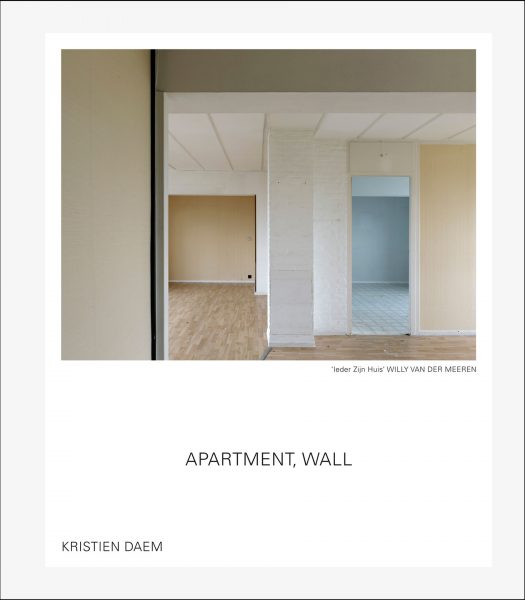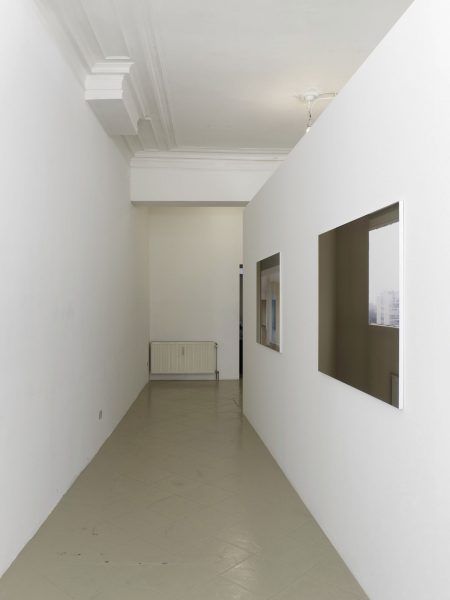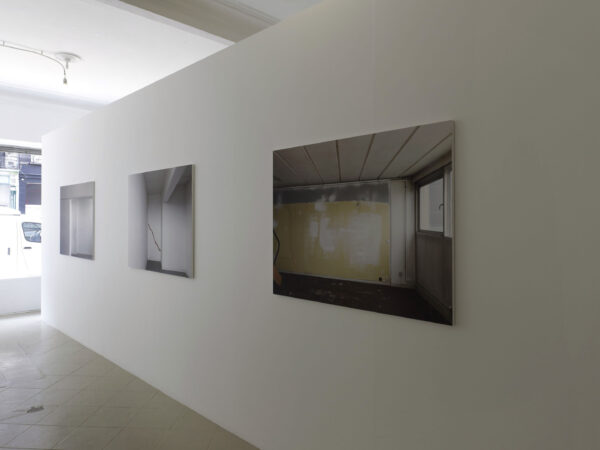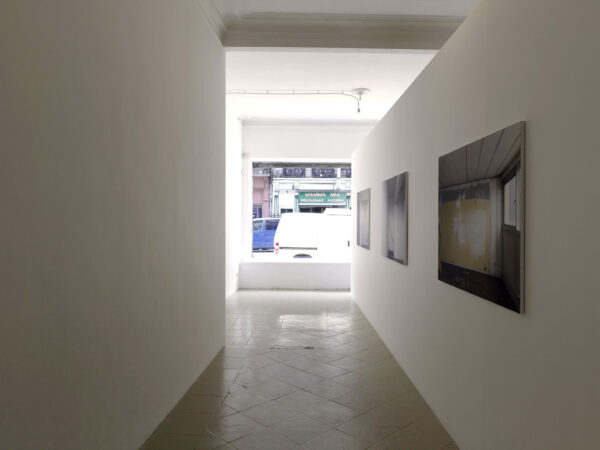OPENING
FRIDAY 10.06.11
EXHIBITION
11.06.11 – 16.07.11
During the summer of 2010, I spent a lot of time in the building ‘Ieder Zijn Huis’ by Willy Van Der Meeren. Walking around, up and down the stairs of the twelve storey high building, pacing through the long corridors and entering most of the rooms of these 105 deserted flats. Facing again and again these walls. Actually without taking a lot of pictures.
Facing the building for the first time I’ve set out the things that crossed my mind that particular moment. I am not sure if I am still interested in it but that is perhaps the fear of publishing this book while leaving something behind me to go further. But at that moment I wanted to disturb the viewer by showing him a kind of a decomposition. The formal experience of facing a building, of watching architecture as we are used to, turns into an active participation: one walks in, around and through a place and faces walls, windows, and all kind of elements, whether or not of architectural interest. The physical awareness of what a building can be.
Figuring out how to make this book. How to take the viewer with me in this experience, very much aware that the repetition of these actions provokes the dullness and can bore the viewer. But hoping that the viewer, turning the pages, sees himself walking through this space and living the experience of the building, floor after floor, room after room, image after image.
The images are dull registrations of this repetition. Abstract, disorientated and straight. Sharp edged detailed recordings of traces left by former residents, not necessarily frustrating but carrying within themselves a beauty. No literal architectural meaning but exploring the limitations of space, the experience of architecture, including the minimal and functional elements of Van Der Meeren ’s architecture.
Using the limitations of an image, framing the images, building up a space within the frame, within the image. What is left outside the frame has no meaning. Yet the arrangement of these abstract images evoke an interference and might influence the viewer.



